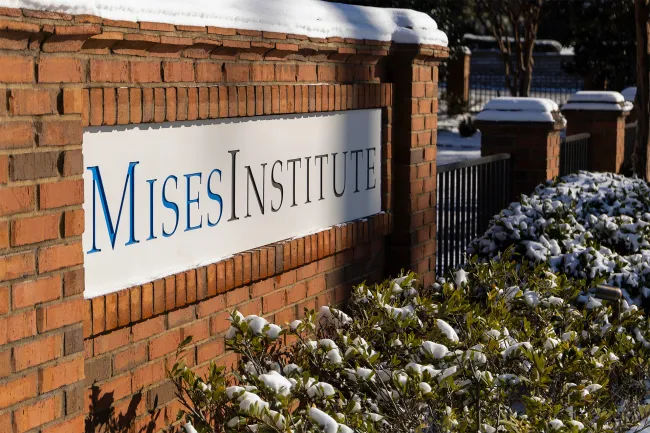Following the Trump administration’s recent implementation—followed by a quick withdrawal—of import tariffs on many other countries, capital markets swung wildly. Equities oscillated between steep losses and exuberant gains, remaining absurdly expensive as of April 11, the end of the trading week. More importantly, bond values across the board took a dive.
High-yield bonds—a euphemism for subprime corporate credit—had been trading at near-record low spreads to treasuries prior to the tariff drama. This means, essentially, that investors were willing to accept minimal additional return—compared to treasuries—for the ostensibly much higher risk of investing in shoddy corporate credit.
After the tariff announcement, spreads doubled, a recognition by investors that these bonds are indeed risky despite the obfuscatory branding.

By the same token, investment-grade corporate bonds—the blue chips of the corporate credit world—saw values dive rapidly despite what would typically be viewed as a “flight to quality” situation wherein less risky instruments might reasonably be expected to increase in value. Bond values and yields are inversely related. As values decline, yields go up.

Last but not least are US Treasuries—the proverbial “risk-free” asset, and this is where analysis gets interesting.
Play Fiat Games, Win Fiat Prizes
Treasury yields have been discussed as one of the primary targets of trade—as well as monetary and fiscal—policy in the sense that a purportedly complex and ingenious strategy of tipping the economy into recession in order to achieve lower yields has been widely attributed to the Trump administration. While clearly ill-conceived and dimwitted, many suggest that such a policy would allow the government to refinance, at lower cost, several trillion dollars in debt coming due in 2025.
But this “strategy” completely ignores market forces and relies instead on a US Treasury “safe haven” paradigm that has historical relevance but has—for several decades—maintained little or no rational basis. Simply put, the government believes that, in troubling financial conditions investors will turn to treasuries en masse in order to protect their capital. This inflow of demand will increase values, thus driving down yields—the borrowing cost of the US government.
Aside from inertia, why should this be the case? The US has—for a century—run monetary policy on the notion of progressively decoupling the dollar from a sound money standard into a pure fiat standard, which it has been on for the last 50+ years. In the process, it has run up a $37 trillion debt which it has no hope of paying, short of printing money and sending the dollar into an even more aggressive inflationary spiral than we’ve recently seen.
Incidentally, despite that $37 trillion debt—or, in many ways, because of it—it’s hard to pin down a single important thing that has improved in the country over the last generation. Americans’ overall health is awful, as evidenced by shortening life spans and increasing rates of obesity and morbidity. American childrens’ abilities in reading and math are no better than they were 50 years ago, and declining dramatically since the covid panic of 2020.
While their overall health and level of education decline, Americans have been living off of the money printer and producing nothing of value because the cultural emphasis has been on consumption, not production. Taking a cue from their government’s habits, the focus is increasingly on what can be obtained in the short-term, not in saving and planning for the future. Paraphrasing Saifedean Ammous, for several decades the US’s chief exports have been fake money, diabetes, porn, and war. Why would someone want to invest—especially at the long end of the curve—in such an entity’s credit?
As such, the recent tariff pronouncements accentuated a trend that began some time ago—notwithstanding the Federal Reserve’s persistent attempts to hide it by printing money and purchasing treasuries—the skepticism of American credit in light of its profligate spending and utter lack of will to change course.
During the week of April 7, the 10-year treasury yield increased by 50 basis points—half a percentage point—the biggest weekly rise since 2001.

Various contributing factors were at play, including the unwinding of the “basis trade”—an ultra-high-leverage trade employed by degenerate hedge funds that were bailed out at the expense of the taxpayer as recently as 2020—and the dumping of treasuries by foreign institutions. But declining market conviction in the credit of the US government is the key underlying dynamic, and the root cause of this decline is the inflationary nature of US fiat money combined with an unchecked fiscal profligacy, the result of which is an American empire that is effectively bankrupt.
Red Lights Blinking
The bond market is sending a message to the US government that its spending is out of control and the reserve currency “privilege” it has abused for the last 80 years is running out.
A rational response to recent events would be for the US government to cut spending, return to a semblance of sound money, and—more generally—begin to scale back the level of its involvement in the lives of everyday Americans. That’s about as likely as the fox guarding the henhouse. More probably—guided by the dominant and ignorant Keynesian model—a new cycle of quantitative easing will arise, forcefully but temporarily driving interest rates down until inflation comes back even stronger. If it continues on this path, the US will dig itself deeper into this hole until it’s buried in it.


